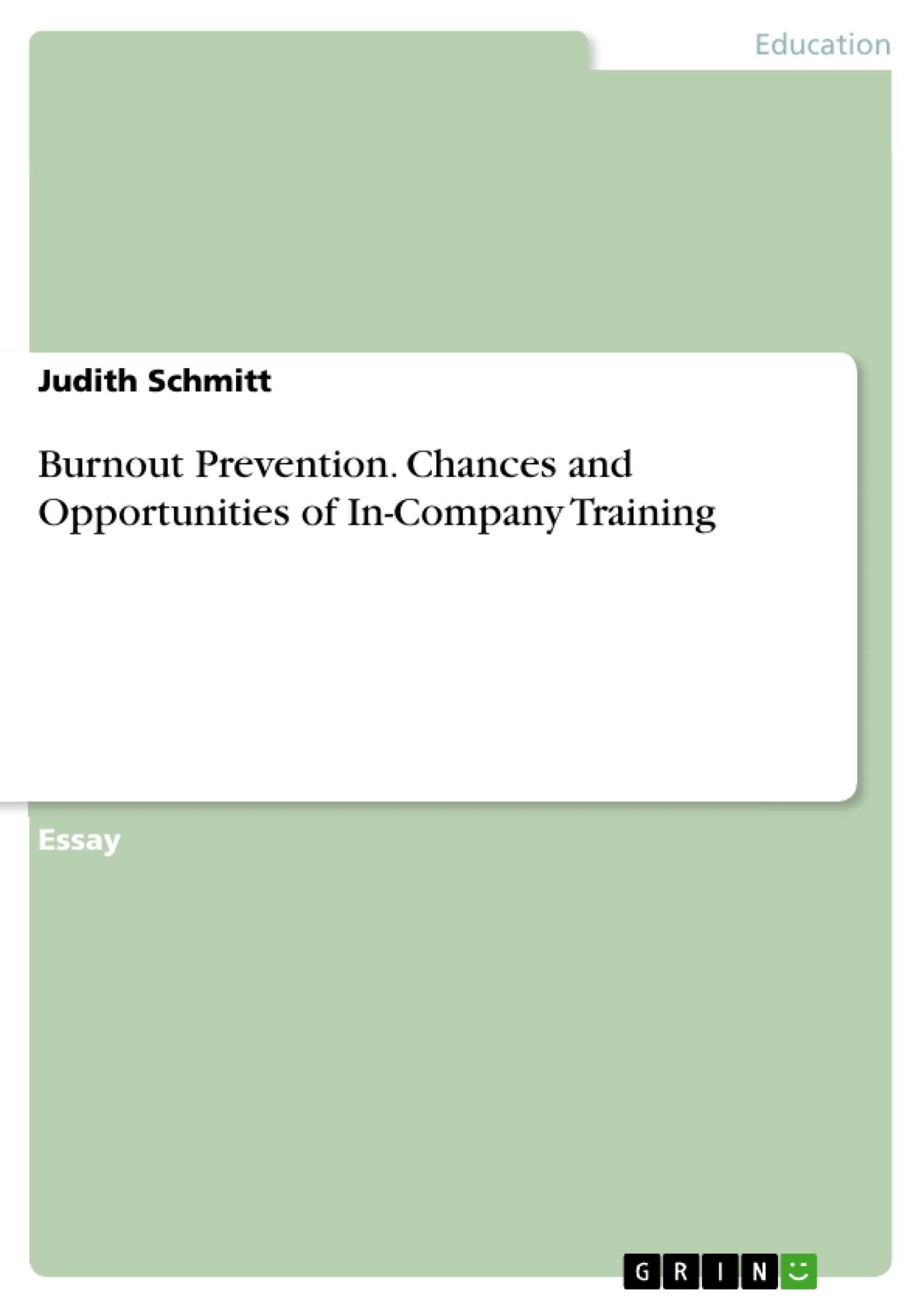The work presented answers the following research question using scientifically based literature research: Can in-company training contribute to prevent burnout in companies? If so, how should it be designed? Today's professional world is shaped by change, mainly driven by digitalization. This change has a strong impact on job profiles, work tasks and qualification profiles. According to a study by the German Institute for Employment Research (IAB) in 2016, 25 percent of professions requiring social insurance should undergo a job transformation. But profound changes can also be expected for employees in professions that will remain as they are today. The repercussions of this are obvious: Health insurance companies record increased absenteeism due to exhaustion, depression and burnout, as well as an increased prescription volume of medicines used to treat these clinical diagnoses. The future need for action that results from this is to shape the professional world in a way that it will meet the mental needs of people better. Mental health is the prerequisite for an active and fulfilling life as well as successful acting in working life. Therefore, targeted prevention of mental illnesses should be a priority for companies. Adult education is one of the key factors here.
Table of contents
List of figures
List of Abbreviations
1 Introduction
1.1 Background
1.2 Method and Objective of Research
1.3 Approach
1.3 Scope of Research
2 What is Burnout?
2.1 Definition of Burnout
2.2 Occurance of Burnout in Companies
2.3 Triggers of Burnout
2.4 Prerequisites for Mental Health
2.4.1 Self-Determination Theory
2.4.2 The Three Factors of the Sense of Coherence
3 In-company Training
3.1 Definition
3.2 The Wider Benefits of Learning
4 Opportunities of in-company Training as a preventive measure
4.1 The Correlation between the Benefits of Learning and the Causes of Burnout
4.2 Recommendations for action
4.2.1 Training content
4.2.2 Recommendations for teachers
4.2.3 Forms of Learning
5 Critical Ciscussion of the Results
6 Conclusion
Bibliography



